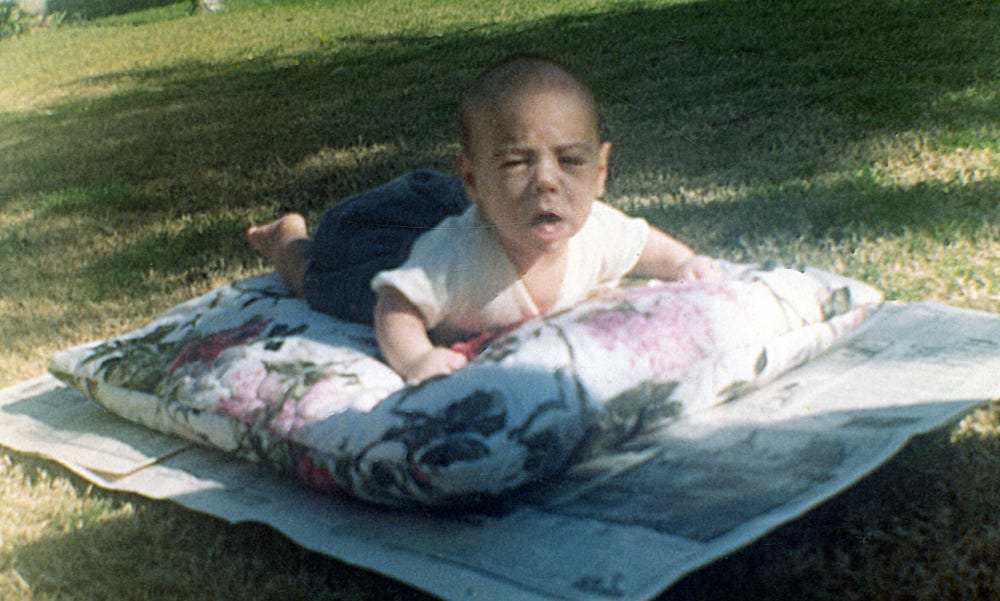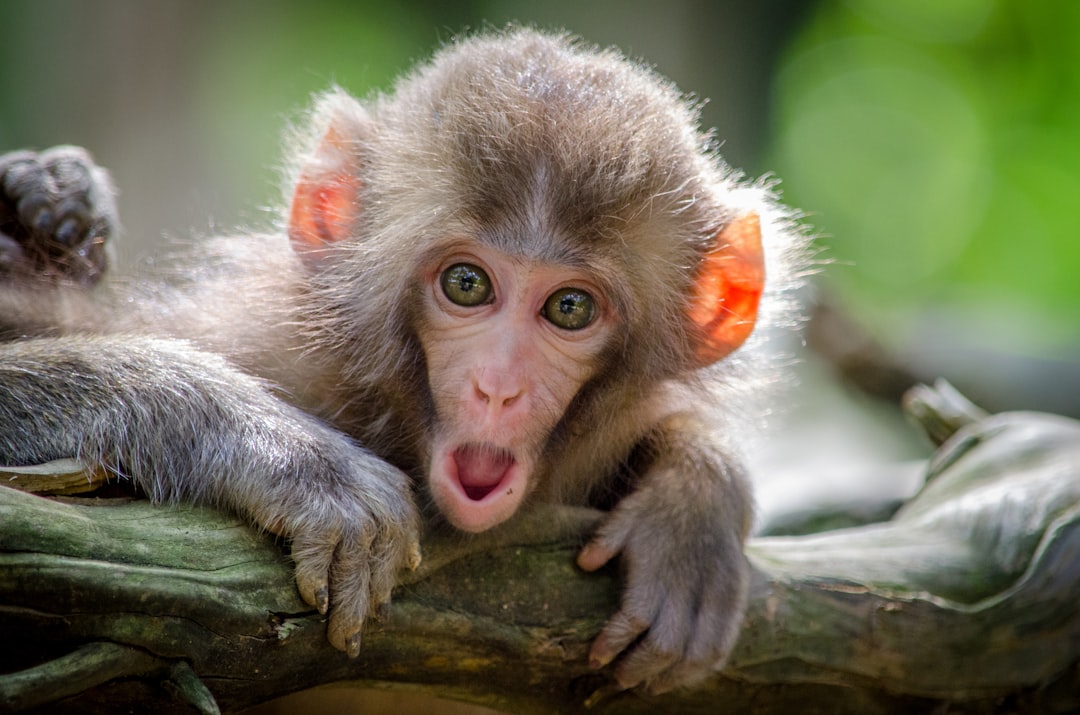Inside Tracks Guest Post by Steve Goldberg: "Monkey Man" by Stones, Toots/Maytals & Smithereens
Earworms & Song Loops' music scribe (& known Homo sapien), Steve Goldberg, unravels his humorous prehensile tale of teen angst & evolution with 3 different songs sharing an identical title!🐵
We Welcome, FRONT ROW & BACKSTAGE, Steve Goldberg, creator of Earworms and Song Loops!
Steve has graciously offered to borrow our popular “Inside Tracks” cover lane to weave his compositional magic around several songs, and into his riveting and harrowing story of a teenage malady most of us never experienced!
It’s anthropoidal hijinks of the highest order, as Steve delivers his unique self-reflections with rockin’ tunes as the backdrop! I first discovered Steve’s entertaining story-telling in July, with this revealing Song Loop about the awkwardness of adolescent coupling, while sharing a Joe Jackson Earworm to accompany:
Steve Goldberg’s “Monkey Man - An ‘Inside Tracks’ Exploration of The Rolling Stones, Toots & the Maytals, and The Smithereens”:
My friend and human database of all things musical from the late ‘60s to early ‘80s, Brad Kyle (author of the fabulous Substack, “Front Row and Backstage”) generously offered me the opportunity to fill in for him on his regular “Inside Tracks” series.
“Inside Tracks,” in its natural habitat, takes a song (usually one that many music fans will know) that has been covered by other artists, and explores the history of the song’s evolution. Usually the version most widely known by the public is not the version from the original artist.
For example, the song “Hanging on the Telephone,” written by The Nerves in 1976, gained a much wider audience when Blondie covered it two years later on their third album Parallel Lines. Later, both Def Leppard and Jimmy Somerville (of Bronski Beat) would cover the song. Here’s the complete story, if you want to learn more:
As I’m too impatient for such a research-intensive endeavor, I’ve decided to morph Brad’s “Inside Tracks” format, and mix it with my special Earworm blend of far too many spices!
This week I’ve had the song “Monkey Man” by The Rolling Stones in my head.
Amidst my super surface-level research into this Stones classic from Let it Bleed, I realized that Toots and the Maytals also recorded a song titled “Monkey Man.”
Then I discovered that The Smithereens, one of my favorite bands from the ‘80s, also wrote a song called “Monkey Man.”
While there are plenty of covers of the Stones and Maytals versions of their song, I thought, why not compare and contrast these three very different sonic takes on our simian relatives.
This “Inside Tracks” deep dive will come in part 3.

2a. Pinnae Hypertrichosis
Many eons ago, a small, 5 pound 6 ounce baby boy was born to new parents, Howard and Judy Goldberg.
They would name him Steven and he would be deemed healthy, with 10 fingers and ten toes. But as deeply and unconditionally as The Goldbergs loved their new son, they were concerned about his hairy ears. The baby seemed to have more growth on his lobes than his head.
Known as ear pinnae hypertrichosis, or more colloquially, “holy crap, that’s a lot of ear hair,” this common condition is almost always temporary for newborns, and occurs not just on the ears, but all over the body. Baby hirsuteness, or “lanugo,” usually falls out within weeks or months.
That’s the extent of my medical research.
Is this what my parents were told back when I was born?
Let’s go to the source and find out.
“I’m supposed to remember that? All I recall is that you slid right out of me compared to your sister.” - Judy Goldberg, responding to her son’s request for details surrounding his birth.
Steven’s ear hair did indeed fall out soon enough, followed by the hair on his head 27 years later. Ironically, or perhaps rudely, Steve would begin to grow hair on his ears again once the head baldness process was complete. His attempts to treat this situation with a half-dozen highly painful electrolysis sessions served only to anger his pinnae follicles, speeding the hair growth.
To learn more about Steve’s early male-pattern baldness and how the hair-metal genre served to twist the proverbial knife of hairlessness, check out the archived story below:
2b. A Tall Tail
When I was 17, I had a pilonidal cyst that had to be surgically treated. Pilonidal cysts occur most often between the cheeks of the buttocks at the top of the crack.
I had no idea what was happening to me, and for months I would pack tissues in the back of my pants to soak up the blood and pus that would ooze from the area.
This was not the sort of thing a teenage boy wants to show his mother, but eventually it got so bad I had to. Because I waited so long to deal with it, surgery was the only option. I’ll spare you the gory details — well, most of them.
After draining my ass and sewing shut my tail hole, I was given a thick, padded bandage that had to be changed out several times daily. This was not possible for me to do, so my mom handled the nursing duties. I stayed home from school for a week. I could not sit, and walking was uncomfortable so I took pain meds, laid on my belly and slept for seven days straight.
This is the story I was told. Or the story I remember being told:
We Homo sapiens in our evolutionary process, once had tails. As we evolved into taillessness, the area at the top of our buttocks, the tail spot, closed up as it was no longer needed. But for some of us, we never fully adapted to the human form. Our tails stubbornly yearned to emerge and offer their assistance to communicating with the other tail-born creatures of the world.
Maybe this explains why dogs and cats tended to sniff me more than other kids.
I come from a long line of flat-asses: Mom, Dad, sister, aunt. Yet, I’ve always had a bubble butt. Was this simply a genetic mishap/miracle?
I’m convinced that I was blessed with a pear derriere because that much m’ass was needed to manage the weight of the tail that I never grew. The tail that wanted to turn me from a monkey boy to a monkey man.
3a.
Is it a coincidence that the song “Monkey Man” is on a Rolling Stones album titled Let it Bleed? I know the lyrics may not directly relate to having a pilonidal cyst, but think about it. Are you going to tell me that this song wasn’t a signal to kids like me that it was okay to have a tail?
That Mick Jagger wasn’t telling me and parents like mine to just let the cyst bleed, to stop trying to deny my/their kids’ true monkey manhood?
“Monkey Man” was track 8 of 9 on the album, directly before arguably one of their three most famous songs, “You Can’t Always Get What You Want.” Perhaps a new reading into this legendary closing track, one that considers its lead-in tune might be:
You may wish not to have been born with a tail, to be like everyone else, to fit in with the masses — but if you can embrace your uniqueness, you will find that you get what you need.
“Monkey Man” the song, exhibited sonic uniqueness as well. It was the first Stones’ track to feature vibraphone. It has a distinctive piano progression in the intro, unlike any the band had recorded previously. And the song was a tribute to Italian pop artist Mario Schifano, whom they met on the set of his movie Umano Non Umano! (Human, Not Human!)
Human, Not Human. Hmmm. I haven’t seen the film, but I wouldn’t be surprised if it is about a man with a tail who is ostracized by society. Food for thought.
It’s all starting to explain my love of bananas and why I wrote an entire 2,000-word essay in this here Substack about my favorite fruit:
3b.
If I were writing this in the style of the original “Inside Tracks” method, I would have used just this version of “Monkey Man” to examine more closely as there are wonderful cover versions of this Toots and the Maytals tune.
Most notably, The Specials recorded it on their 1979 self-titled debut album. Picking up the pace considerably, the band still honors the original, even slowing it down for a few measures half way into the song. It’s a wonderful, spirited version.
Another excellent tribute to the Maytals original comes from the late Amy Winehouse. I assume the band playing behind Winehouse are the Dap-Kings, but perhaps not. Maybe someone can do the research and let me know. Clearly Amy is taking her cue from the Specials’ version of “Monkey Man,” but either way, she owns the song and further cements the tragic loss of a true musical talent gone too soon.
But there is no denying the power of the original.
Written by Frederick Hibbert — “Toots” of Toots and the Maytals — the song is considered one of the essential early rock steady classics. It sounds just as vital today as it did back in 1967 when it was first released.
I’m not gonna go into a whole history of Toots and the Maytals and their importance to essentially all music that came afterward (that would take a book), but their imprint on the reggae, ska, R&B and soul music universes is undeniable and unparalleled.
3c.
The Smithereens are most famous for their late 1980s hit songs, “A Girl Like You,” “Only a Memory,” and “Blood and Roses.” If you don’t know these tracks, do yourself a favor and seek out The Smithereens first two albums, Especially For You and Green Thoughts. Their later albums are good and worth listening to as well, but these first two albums are truly rock classics.
[Editor’s note: The editor concurs, and also wholeheartedly endorses these Smithereens platters, also noting that he’s sung all three mentioned songs at karaoke in the past decade].
As a big fan of The Smithereens, I was surprised that I had never heard their “Monkey Man” before researching this newsletter. Well, apparently there is a good reason for that:
The Lost Album is the twelfth studio album by American rock band the Smithereens, released on September 23, 2022, by Sunset Blvd Records. It comprises tracks recorded in 1993 for an abandoned album, and is the first album of previously unreleased original material in eleven years, since the release of 2011 in 2011.-Wikipedia
The song, as well as eleven other tracks recorded almost 30 years ago, had never been released to the public until two months ago. Wow. I may never have known about this album if I hadn’t been researching “Monkey Man” songs!
I’m super excited to check out the whole album as this was a creatively rich period in the band’s musical history.
Well that was a lot of monkeying around for one long post!
There are a lot of great monkey songs out there, in all genres. What are some of your favorites? Post in the comments the simian songs that have left a lasting impression on you. And feel free to share your monkey stories, too!












Thanks for the share, Brad! As you know I did borrow your version of Inside Tracks as well as my own take!;) Couldn’t help but include The Specials and Amy Winehouse versions of the Toots & the Maytals tune.